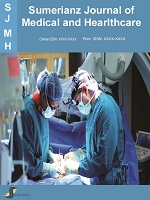Sumerianz Journal of Medical and Healthcare

Online ISSN: 2663-421X
Print ISSN: 2706-8404
Quarterly Published (4 Issues Per Year)
Journal Website: https://www.sumerianz.com/?ic=journal-home&journal=31Archive
Volume 5 Issue 2 (2022)
Crimean-Congo Hemorrhagic Fever in Iraq (2018-2022) and an Educational Review
Authors : Aamir Jalal Al-Mosawi
DOI : doi.org/10.47752/sjmh.52.18.22
Abstract:Background: The first patient with Crimean-Congo hemorrhagic fever was reported in Iraq for the first time on 3rd of September, 1979, and recurrent outbreaks were recorded thereafter with none more patients observed during the next two years. Little is known about the epidemiological state of the disease in Iraq during the previous years. Patients and methods: An overview of the cases of Crimean-Congo hemorrhagic fever registered by the Iraqi Ministry of Health from January, 2018 to May, 2022 is provided. An educational review is presented in the "Discussion". Results: During the year 2018, there were ten cases (including 3 from Diwaniyia province) confirmed by Reverse Transcriptase Polymerase Chain Reaction registered by the Iraqi Ministry of Health, and death occurred in eight of the cases. During the year 2021, the Iraqi Ministry of Health reported the registration of fifteen laboratory confirmed cases of Crimean-Congo hemorrhagic fever during the period from April to November 2021, and 5 deaths occurred. On the 27th of April 2022, the Iraqi Ministry of Health registered 17 cases of laboratory confirmed hemorrhagic fever occurred during the year 2022, and many cases were from ThiQar, and five deaths occurred. Conclusion: 42 cases of laboratory confirmed cases of Crimean-Congo hemorrhagic fever occurred in Iraq during the period from January, 2018 to May, 2022. The disease is still endemic in Iraq and was associated with a high mortality as 18 of the 42 confirmed cases died. Therefore, we are recommending using the available research evidence suggesting the early use of ribavirin in the treatment of patients, and also using ribavirin post-exposure prophylaxis and early ribavirin treatment for workers at medium-to-high risk.



